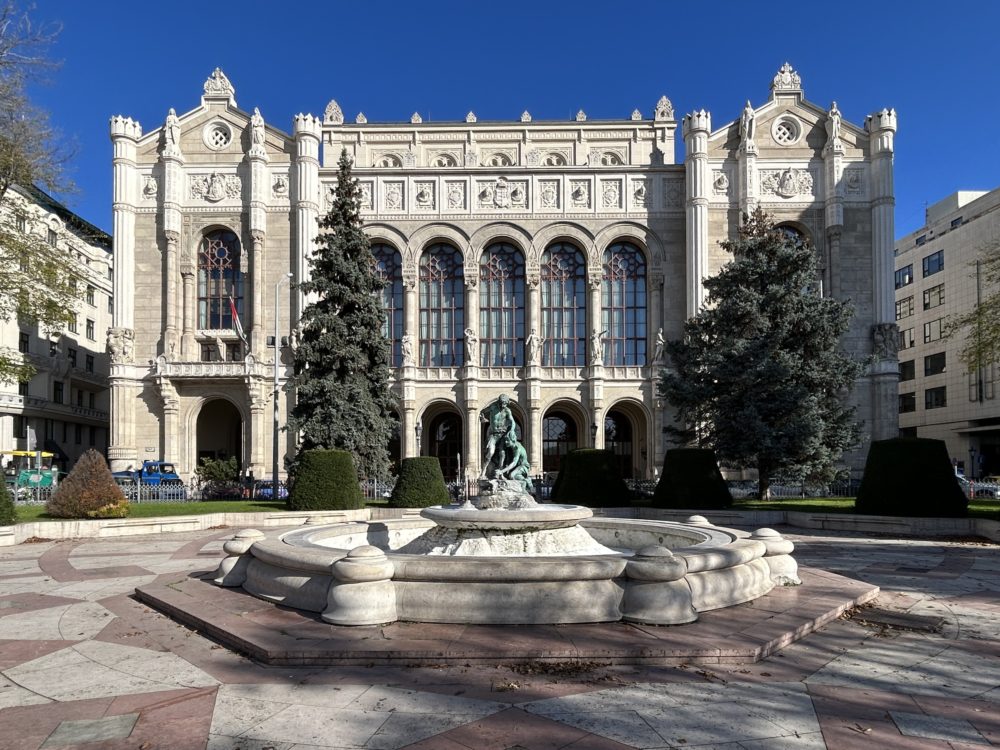If you are looking for a place to enjoy the beauty and culture of Budapest, you might want to visit the Vigadó, a stunning concert hall and art gallery on the eastern bank (Pest-side) of the Danube.
The Vigadó, which means “place for merriment” in Hungarian, has a rich and fascinating history that spans more than 150 years. Designed by Frigyes Feszl in 1859 in a romantic style, it combines elements of Hungarian, Moorish, and Renaissance architecture. The building features a magnificent facade with statues, reliefs, and balconies, as well as a splendid interior with frescoes, stained glass, and sculptures.
The Vigadó has witnessed many important events in the history of Hungary and Europe, such as the coronation banquet of Emperor Franz Joseph in 1867, the birth of Budapest as a unified city in 1873, and the first performance of the Hungarian national anthem in 1844.
The Vigadó has also hosted some of the most renowned musicians and artists of all time, such as Franz Liszt, Johannes Brahms, Claude Debussy, Richard Wagner, and Pablo Picasso.
The Vigadó was severely damaged during World War II, and it took 36 years to restore it to its original glory. Today, the Vigadó is a vibrant cultural center that offers a variety of programs and exhibitions, as well as guided tours and workshops.
You can enjoy classical music, opera, ballet, folk dance, jazz, and contemporary art in this magnificent building, or simply admire the view of the Danube and the Buda Castle from its terrace.
#vigado #budapest #danube #architecture #culture #history #music #art













